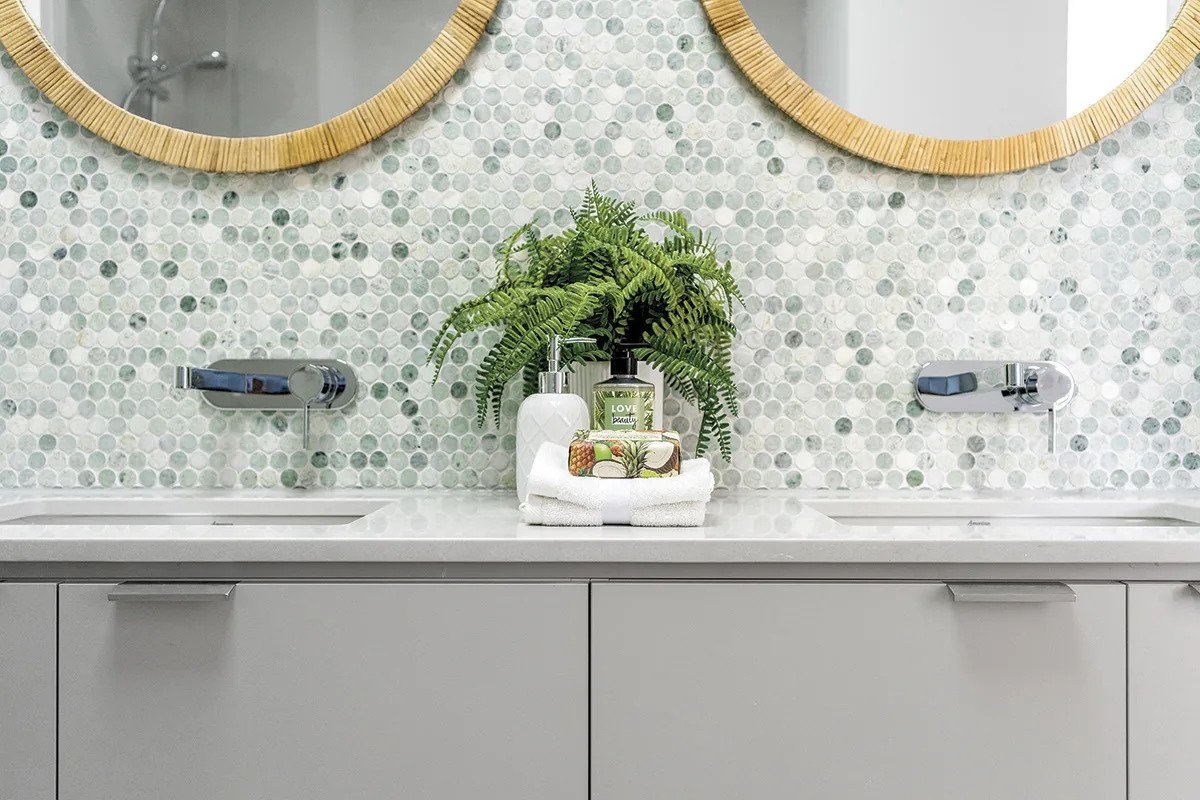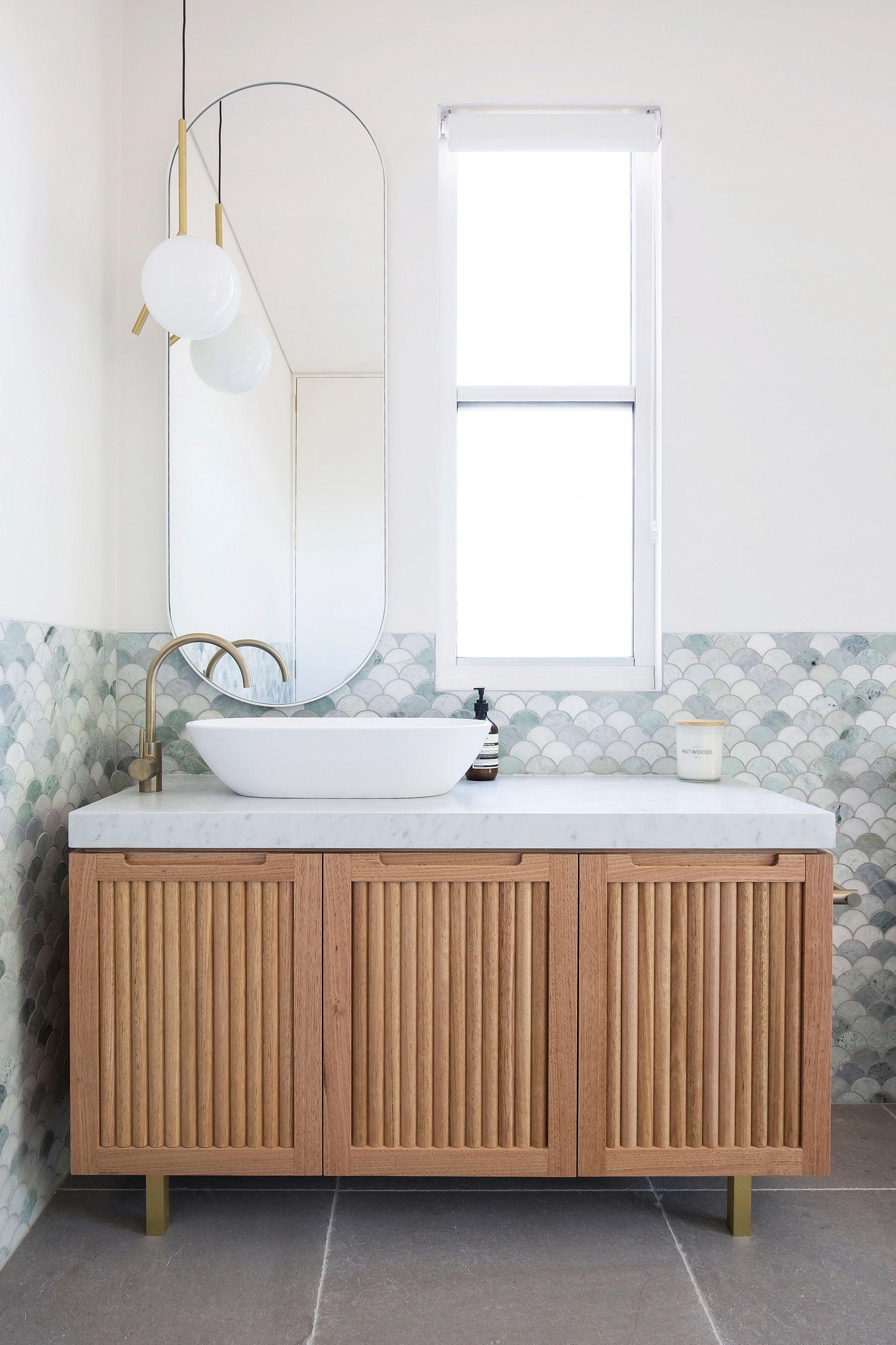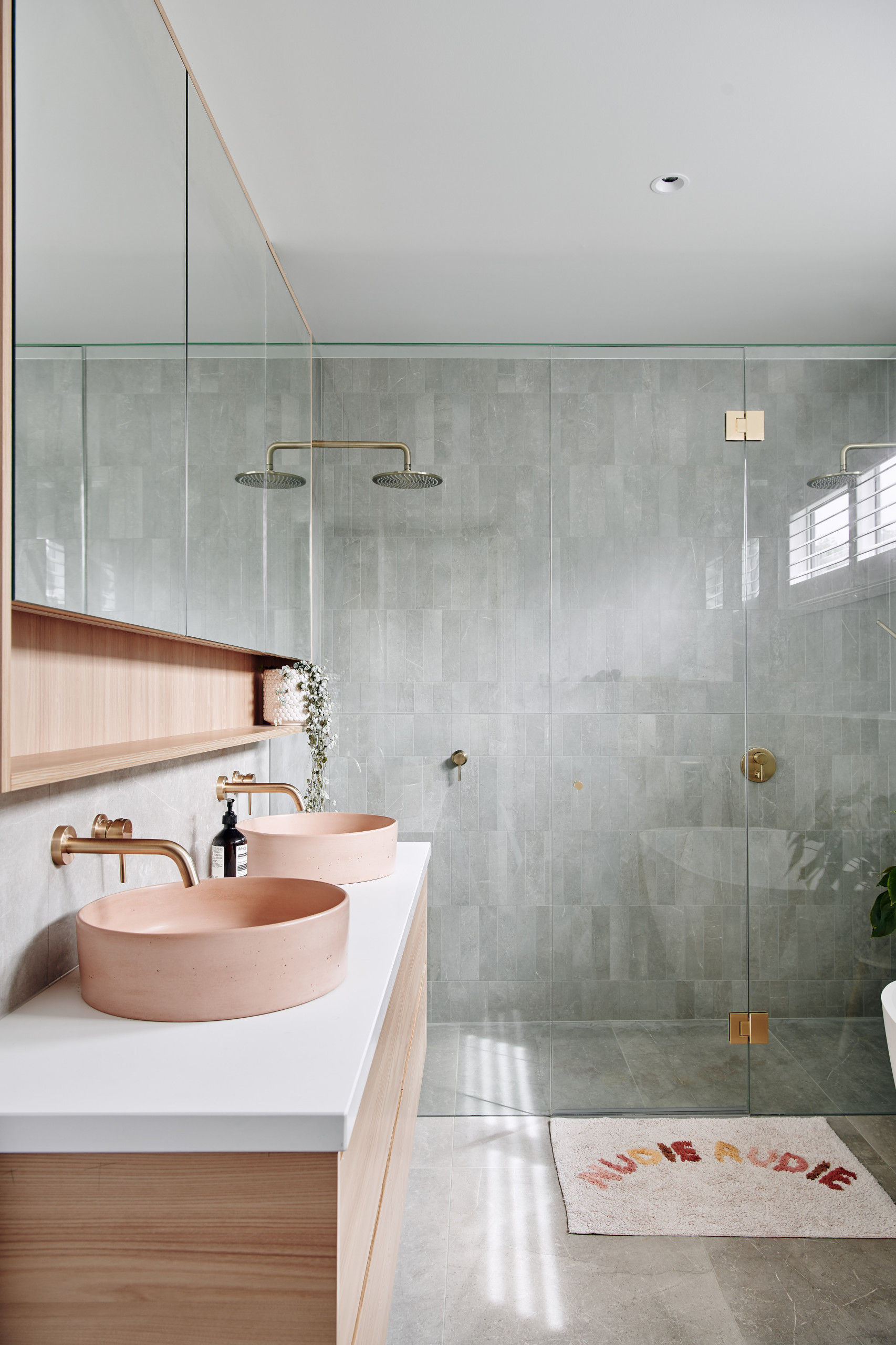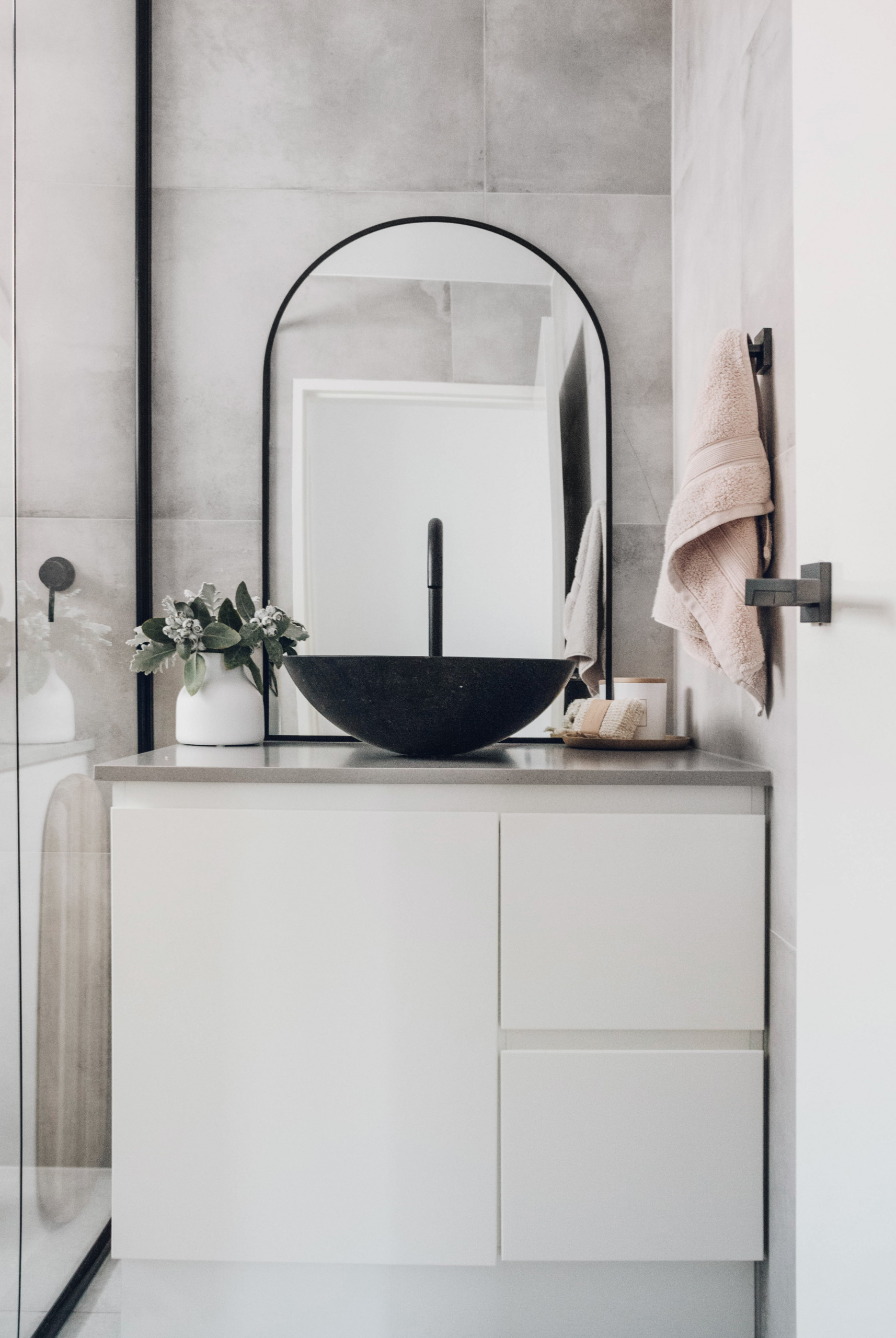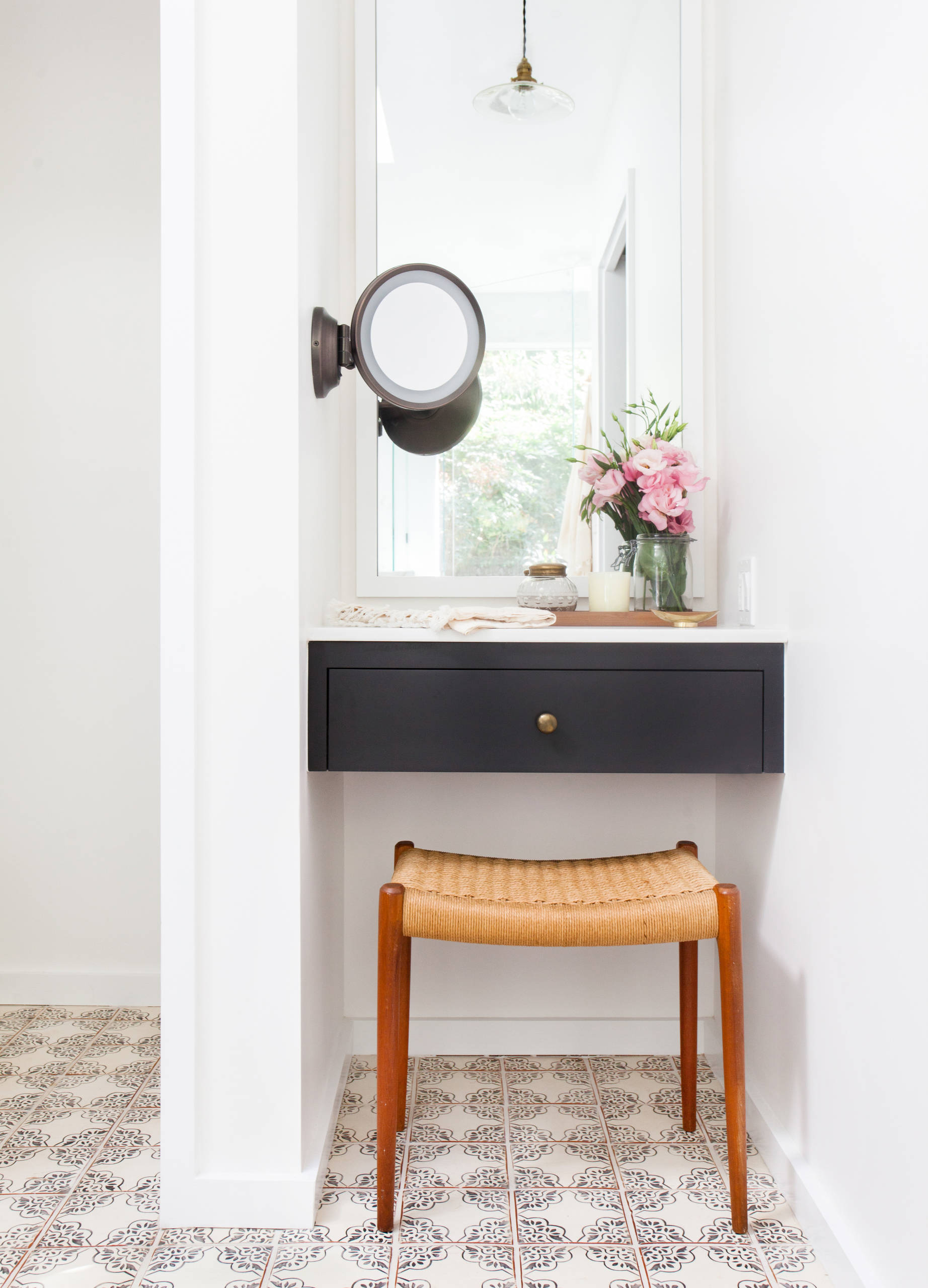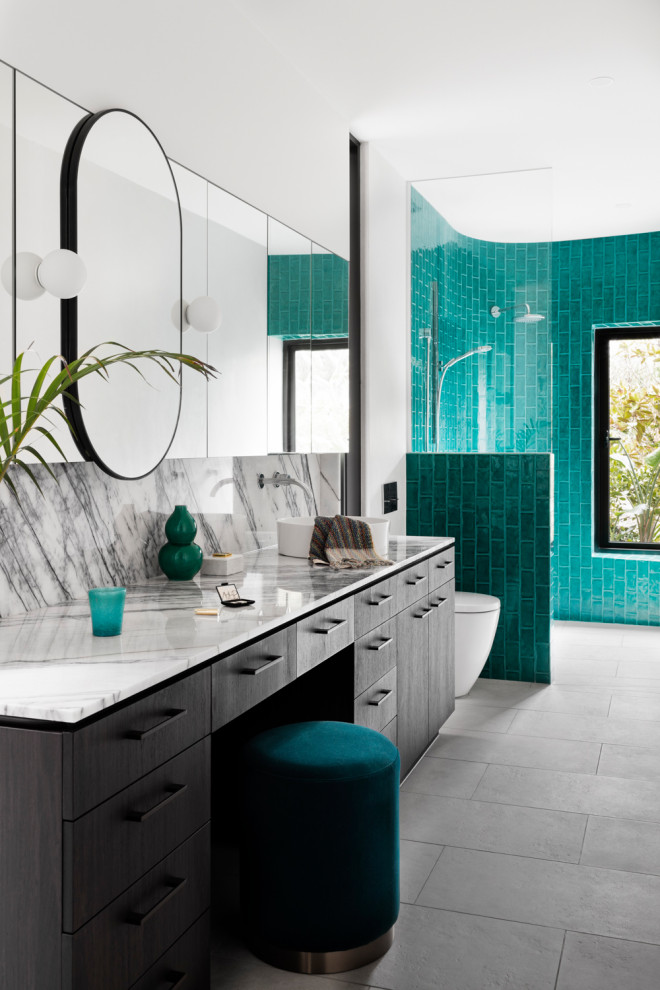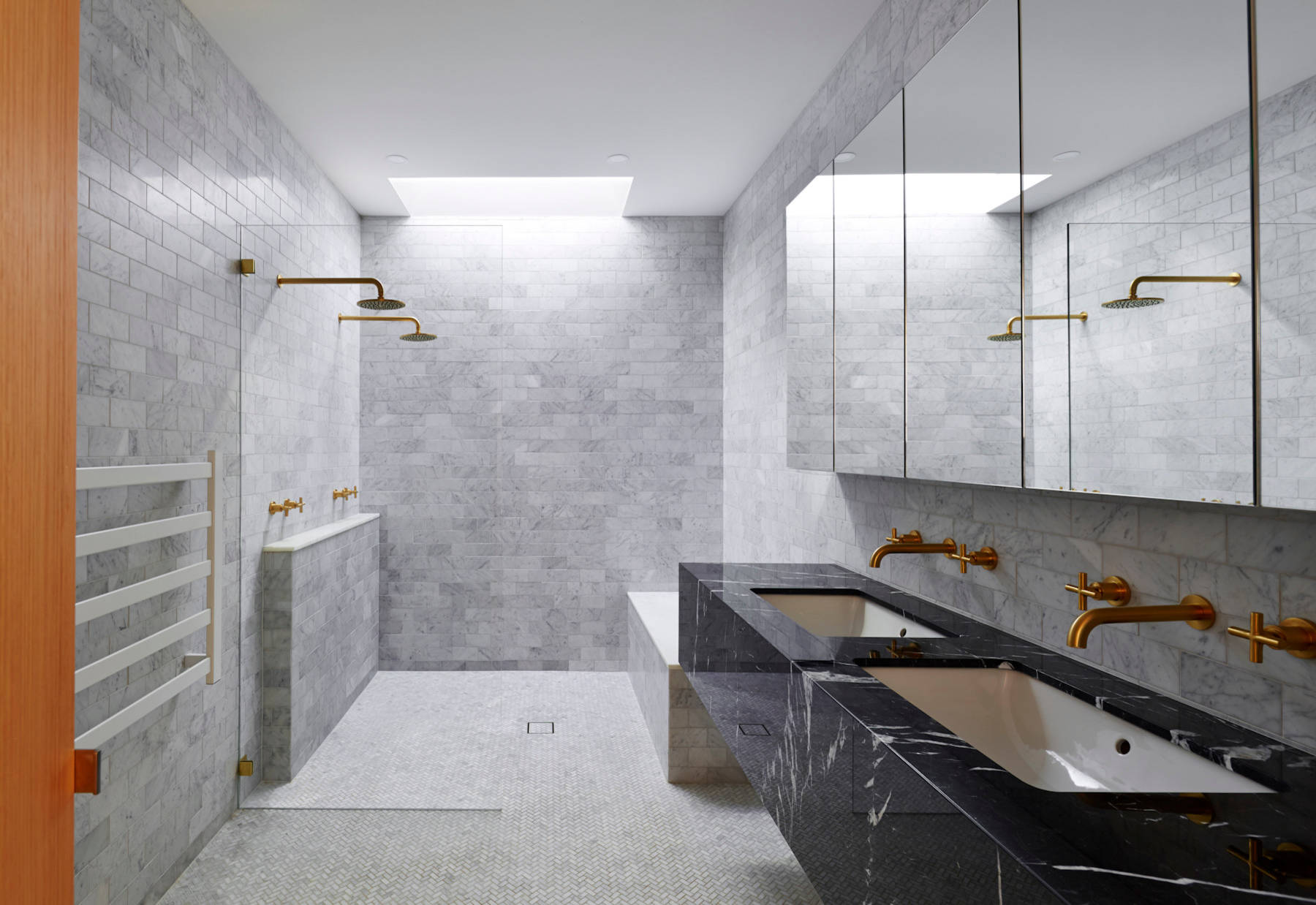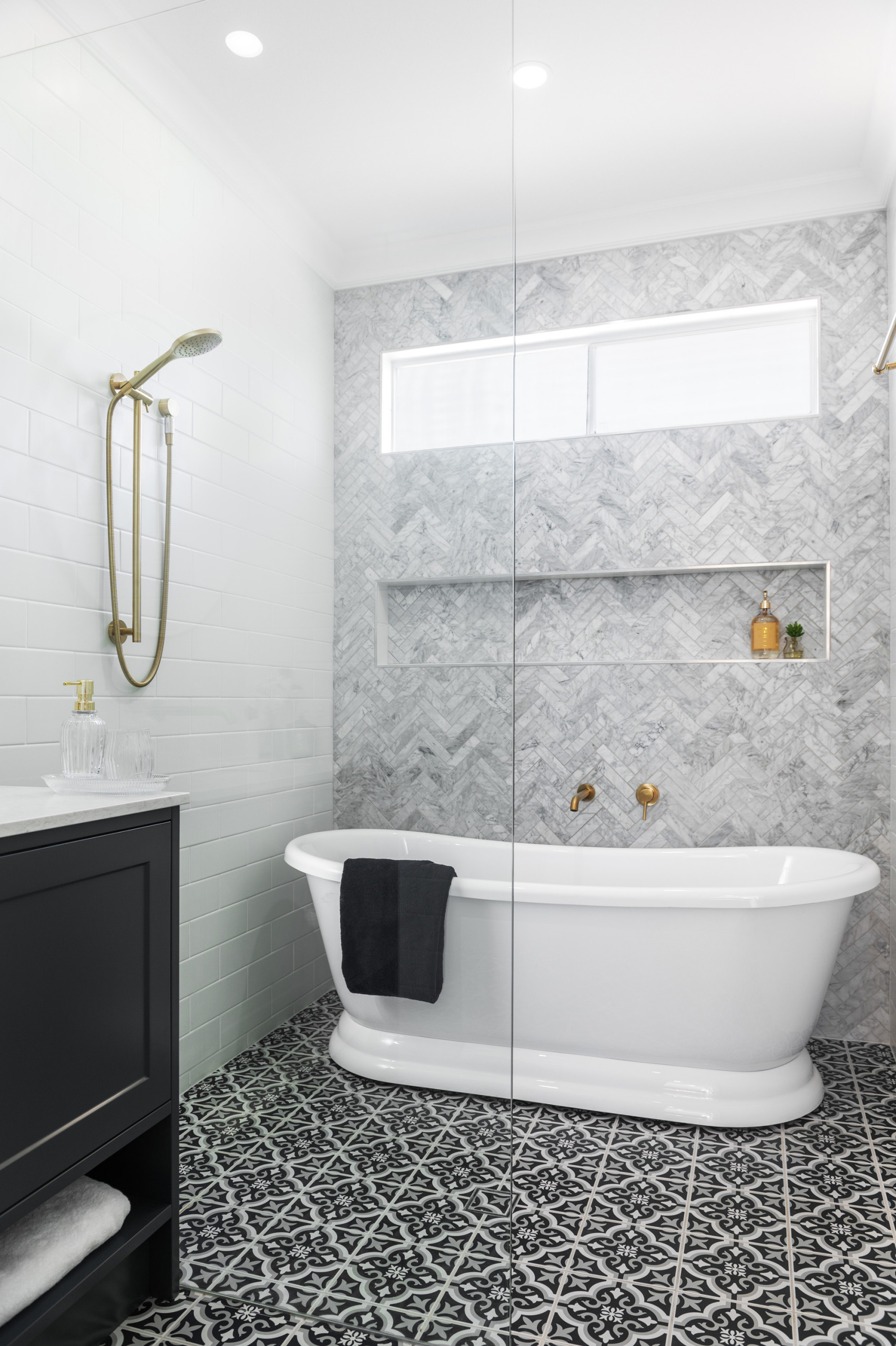Bathroom Essentials: Right Heights for Vanities, Mirrors & More
Making some bathroom upgrades? Here’s how to place all your main features for the most comfortable, personalised fit
A bathroom layout is often a pretty easy decision to make for most homes. If the plumbing is already in place and you’re using standard-size pieces, there often aren’t a whole lot of options for rearranging that floor plan. However, when bringing your dream design into the real world, you have to think about the third dimension and figure out what height is right for everything you bring into your room. Consider this your guide to hanging, installing and aligning the many small features of your bathroom.
What’s the standard height for a bathroom vanity?
The standard vanity height in Australia and New Zealand is typically 850 to 900 millimetres, but what’s actually more important is your sink height.
What’s the standard height for a bathroom sink?
A vessel sink will naturally sit much higher than an inset under-bench sink, so a vessel sink should be placed on a lowered vanity to compensate.
The average height of a bathroom vanity with a vessel sink should be approximately 750 millimetres (your sink will add extra height and bring the top of your basin up to about 850 to 900 millimetres above floor level).
Ultimately, you should try a few different sinks (in store or in bathrooms you like) and figure out the height that feels most comfortable for you.
What’s the best height for a vanity mirror above a sink?
Likewise, the height of mirrors should be based on your own height. Find an average eye level for everyone using the mirrors, and make sure this height is well within the upper and lower borders of the mirror (1600 to 1750 millimetres is average, but your household may vary).
In many situations a centreline can be created between the vanity bench and your mirror for the most symmetrical look.
People often place the bottom edge of the mirror above the taps, but in fact allowing the two to visually overlap can create a very elegant effect.
What’s the best bench height for a make-up station?
When combining a standing vanity benchtop with a sit-down make-up station, you’ll need to adjust the height down to about 750 millimetres or lower (the minimum is about 600 millimetres).
And remember to double check your stool or chair fits under it properly – most standard chair heights will be fine, though bar stool heights won’t fit.
Try sitting at a real desk or vanity and see if it feels comfortable. Considering you’ll be applying make-up rather than typing or writing, erring on the low side is better for leaning forward.
How high should a shower screen be?
I prefer to run shower enclosure glass to the full ceiling height (with the door just slightly below, to allow for a free swing).
A 450-millimetre-wide fixed panel and a 600-millimetre-wide door panel work well for a typical 1500-millimetre tub or shower enclosure. Place the door handle at about 900 millimetres off the floor, or wherever is comfortable for you to reach. (Follow the placement of handles in other rooms that work well for you.)
Alternatively, you may not need a glass shower door – a single-pane fixed shower screen might provide all the protection from splashes you need.
In this case, you can run the shower screen right up to the ceiling or choose for it to stop short – the choice is yours. If you prefer the latter look, align the top of your shower screen with the height of other elements in your bathroom (the top of your mirror or wall tiles, for example) for a cohesive aesthetic.
What’s the best height for a shower bench seat?
Shower ledges and low niches have lots of practical uses, such as giving you a place to perch toiletries that children can reach or a spot to rest your leg when shaving. Because of this, the top can sit a bit lower (around 400 millimetres) than a typical bench-seat height.
What’s the average showerhead height in Australia and New Zealand?
A showerhead, even a rain shower design, shouldn’t sit so low that you must stoop, or so high that the water pelts you rather than gently raining down.
A height of around 2000 millimetres is typical, but this can be adjusted for taller or shorter bathers. Also keep in mind that your showerhead must project far enough out from the wall for you to stand under it, which is especially important to remember when you have a shower bench or a bath-shower combination.
What’s the typical shower niche height?
I love adding niches to shower areas, for the practical storage capabilities and the beautiful accent. For a bath they make sense just above the tub surface, as you’ll be lying down when you reach for that shampoo, but in a shower they should be much higher, around 1200 millimetres, so you don’t have to lean down to reach anything.
Place your shower controls around 1000 to 1200 millimetres high at the centre, and a bathtub filler or tap 100 to 150 millimetres above the top of the tub.
How high should a toilet roll holder be?
When placing the toilet paper holder, the tendency can be to picture the roll as hanging lower than it really should. Standard height is about 650 millimetres off the floor, which is closer to the height of the top of your toilet’s cistern than seat, so I recommend placing it on this level for a clean line. Attaching it to the side of the vanity (toward the front rather than centred, for reachability) is another option for tighter spaces.
How high should a towel rail be?
For other accessories, such as towel rails, hooks and robe hooks, the height is flexible, but consider the length of what will hang. Towels need at least 900 millimetres typically, washcloths 450 millimetres, and robes 1500 millimetres – it’s best not to eyeball it.
A standard towel rail is 1200 millimetres above the floor, but it can be adjusted to line up with something else (such as the knob on the shower door or the towel hooks over the vanity) without being too hard to reach.
What are the bathroom power point regulations in Australia and New Zealand?
One of the items that I found often goes the most overlooked in bathroom design is actually one that ironically is best left unseen: the power points.
Power points should be at least 400 millimetres above the top of a water container (in this case, the basins) and a minimum of 150 millimetres from the edge. Bathrooms and wet areas are considered in ‘zones’ and different regulations apply to each (you won’t want or be able to install a power point in your bath or shower zone, for example), and a good bathroom designer will know the rules by heart.
Here you’ll notice that the electricals for the vanity seem, well, to barely exist at all. That’s because the power points are tucked to either side and blend into the wall colour. The power points are still conveniently positioned for plugging in a hairdryer or electric shaver, but they don’t stand out.
Originally published by Houzz


